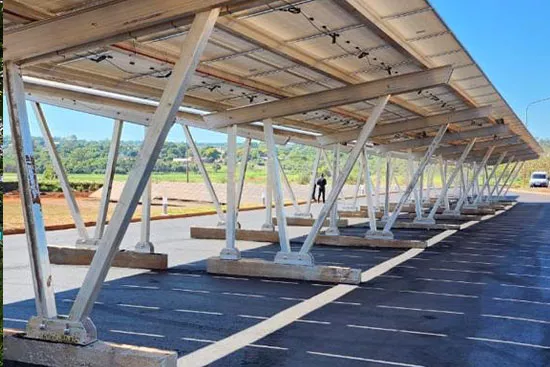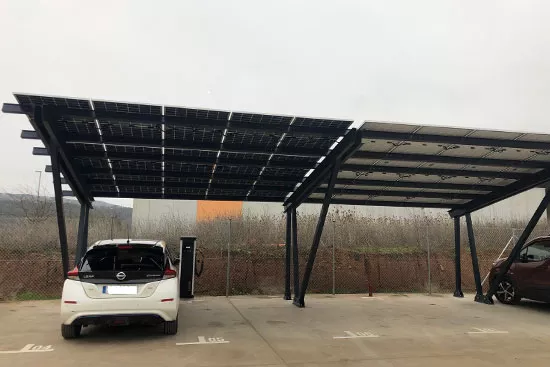Solar canopy calculation
Need a parking canopy calculation?
The calculation of parking canopies refers to the process of designing and sizing the structures that will provide coverage and protection for parked vehicles. These solar canopies, also known as parking shelters, are designed to shield cars from weather elements such as rain, hail, intense sunlight and snow, as well as to reduce heat buildup inside the vehicles.Key factors for the calculation of solar canopies
Area dimensions
Climatic conditions
Wind and snow loads
Material selection
Importance of calculating parking canopies
- Stability and Safety: Proper calculation ensures that the canopy is stable and safe. Wind, snow loads, and other climatic factors are taken into account to design a resilient structure that can withstand adverse conditions without endangering parked vehicles or nearby individuals.
- Proper Sizing: By accurately calculating the dimensions of the canopy, it ensures that it can cover the intended number of vehicles without wasting space or falling short. Precise sizing optimizes the use of parking area.
- Material Selection: The calculation considers the most suitable materials for the construction of the canopy. The appropriate choice of materials ensures the durability and strength of the structure, as well as its ability to withstand local climatic conditions.
- Regulatory Compliance: The calculation is performed in accordance with local building codes and regulations, ensuring that the canopy meets the safety and construction standards established by relevant authorities.
- Cost Optimization: Accurate calculation helps avoid unnecessary expenses on materials or later modifications to the construction. Furthermore, a well-designed canopy reduces long-term costs by protecting vehicles from the elements and decreasing the necessary maintenance.
- Energy Efficiency: The calculation may include elements of energy efficiency, such as positioning the canopy to take advantage of natural shade or installing solar panels to reduce energy consumption.
Contact us
Basic information on data protection
Responsible: Cero Metros Cuadrados, S.L.
Purposes: Manage the sending of information that you request. Sending commercial communications.
Legitimation: Consent. You can withdraw consent at any time.
Recipients: Your data will not be transferred to third parties except in case of legal obligation.
Data subject's rights: To access, oppose, rectify and have their data deleted, as well as other rights as explained in the additional information.
You can access additional and extended information at this link.
FAQ
How is the wind resistance of a parking canopy calculated?
How is the load capacity of the canopy calculated?
Calculating the load capacity of a solar canopy involves determining the maximum weight that the structure can safely support. Factors such as the strength of the materials used, the design of the structure, expected loads, and wind loads are taken into consideration. Engineers assess the integrity of the canopy through stress analysis and testing to ensure it meets the load requirements established by construction standards.



